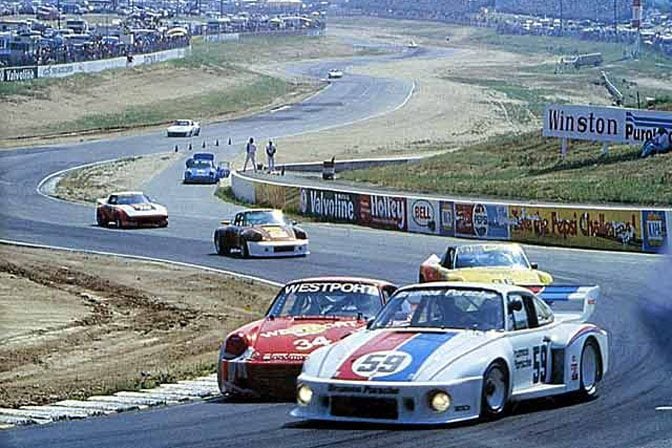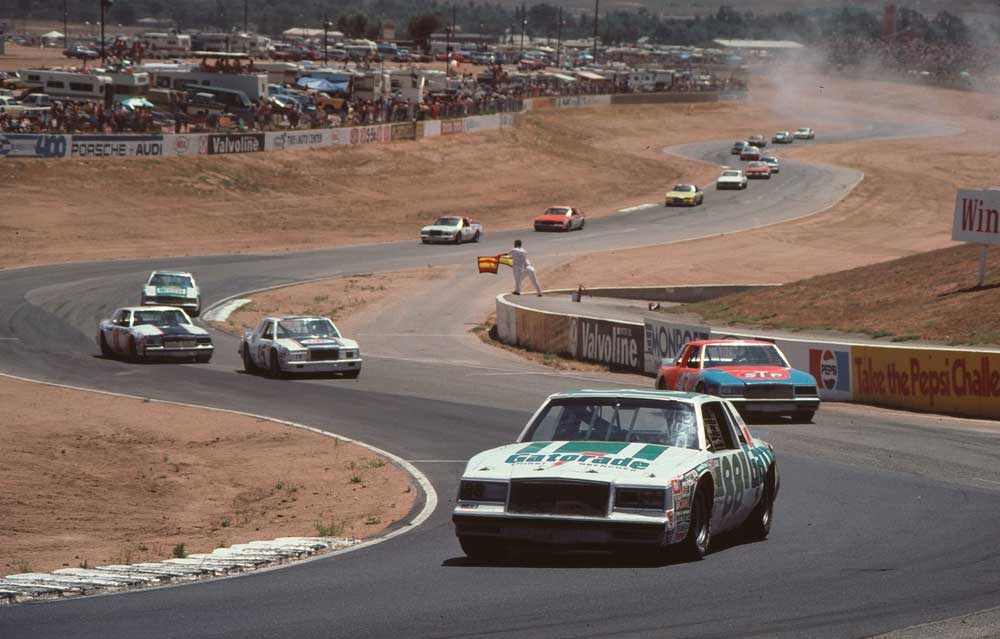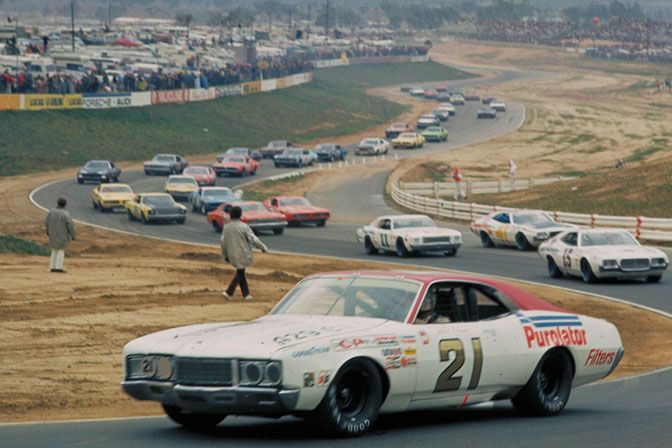- 14,660

- The UK
- JASON_ROCKS1998
- JR98 GAMING

Riverside International Raceway was a road course that was first opened in 1957 in Riverside, California. The original course design proved to be dangerous, and it was partially reconfigured in 1969. The track was built to accommodate several different configurations, depending on the type of car and race length. The three options on Riverside Raceway were the long course (3.27 miles (5.26 km)), the short course (2.5 miles (4.0 km)), and the NASCAR course (2.62 miles (4.22 km)). The original racetrack had a 1.1-mile (1.8 km) backstretch from 1957 to 1968. When the track was redesigned in 1969, Turn 9 was reconfigured with a wider radius and a dogleg approach added to reduce strain on the cars' brakes.
Due to its proximity to the Southern California entertainment industry, RIR was a frequent filming location for Hollywood movies, television series and commercial advertisements. Scenes from the television shows CHiPs, Simon & Simon, The Rockford Files, Knight Rider, and the Super Dave Osbourne were shot on location at RIR.
The first weekend of scheduled races in September 1957, a California Sports Car Club event, John Lawrence of Pasadena, California, lost his life. Lawrence, a former Cal Club, under 1500 cc Production champion, went off at Turn 5 (later designated Turn 8). With no crash barrier in place, and no rollbar on the car, the MG A he was driving went up the sand embankment, then rolled back onto the track. Though Lawrence survived the incident, and appeared slightly injured, he died later at the hospital of a brain injury.
The second major event at the track, in November 1957, was a sports car race featuring some of the top drivers of the day, including Carroll Shelby and Ken Miles. Another driver entered was an inexperienced local youngster named Dan Gurney, who had been offered the opportunity to drive a powerful but ill-handling 4.9-liter Ferrari after better-known drivers such as Shelby and Miles had rejected it. Shelby led early but spun and fell back. Gurney assumed the lead and led for much of the event. Shelby, driving furiously to catch up, finally overtook Gurney late in the race and won. Gurney's performance caught the eye of North American Ferrari importer Luigi Chinetti, who arranged for Gurney to drive a factory-supported Ferrari at Le Mans in 1958, effectively launching the Californian's European career.
The track was known as a relatively dangerous course, with its long, downhill back straightaway and brake-destroying, relatively slow 180-degree Turn 9 at the end. During the 1965 Motor Trend 500 NASCAR race, Indycar great AJ Foyt suffered a brake failure at the end of the straight, going end-over-end at high speed. Crash crews assumed Foyt was dead at the scene, until fellow driver Parnelli Jones noticed a twitch of movement. Ford factory sports car driver Ken Miles was killed there in a testing accident in August 1966 when his Ford sports car prototype (known as the J-car) became aerodynamically unstable and flew out of control at the end of the back straight. In December 1968, American Formula 5000 champion Dr. Lou Sell crashed and overturned in Turn 9 on the first lap of the Rex Mays 300 Indianapolis-style race, suffering near-fatal burns. These accidents and others caused track management to reconfigure Turn 9, giving the turn a dogleg approach and a much wider radius (a water improvement also closed the raceway for a few months).
In January 1964, Riverside also claimed the life of 1962–'63 NASCAR champion Joe Weatherly, who refused to wear a shoulder harness and wore his lap belt loosely. Weatherly died when he lost control entering Turn 6, hitting the steel barrier almost broadside and had his head snapped out the window against the barrier.
Nevertheless, in 1983 Turn 9 was the site of the only fatality in IMSA GTP history. In the 1983 Times Grand Prix, Rolf Stommelen's Joest-constructed Porsche 935 lost its rear wing at the Dogleg and hit two freeway-type barriers sending it into a horrific roll at Turn 9.
RIR, headed by former Los Angeles RAMS player Les Richter sold the property to real estate developer Fritz Duda in 1983. The irony is that Duda had once been a turn announcer for NASCAR's broadcasting arm Motor Racing Network, and many felt racing would long be a part of the Riverside landscape. 1988 was the final year of racing for Riverside International Raceway. On June 12, 1988, NASCAR held its final race at RIR – a race won by Rusty Wallace. In 1989, the track was modified from turn 7A to the back straight. The modified track was called Riverside Regional Raceway and continued to be used for club events. After SCORE International held its last race, the track finally closed its gates after 32 years of racing. Fritz Duda turned the "House that Dan Gurney built" into a shopping mall which opened in 1992. The Moreno Valley Mall is on the northern end of the former raceway property and houses now occupy the southern end of the old racetrack. In a 1994 topographical map, the remains of Riverside's Turn 9 and a wall were still visible. However, today nothing is left of RIR except for memorabilia from the racetrack. The old Administration Building remained until 2005, when it was torn down to make way for a complex of townhomes.
When Riverside closed in 1989, it followed in the footsteps of Ontario Motor Speedway, which closed in 1980 In the 1990s, two new circuits opened: Auto Club Speedway in Fontana in 1997, and Irwindale Toyota Speedway in 1999 which seems to also have been shut down and will be turned into a mall in 2017. Both tracks, like Riverside, have been used for filming.
In 2003, the remainder of the old Riverside International Raceway was torn up. The sign that was at California 60 and Day Street was removed to make way for a Lowe's warehouse and Turn 9 of the old track is now home to houses.
In 2003, plans were announced to build a 3-mile (4.8 km) road course with a similar design to the famed Riverside layout in California. The track would have been known as the Riverside Motorsports Park, but the project was abandoned in 2009.
Events Held at Riverside:
NASCAR
IndyCar (1967-1969 & 1981-1983)
Riverside 400 (1976)
US Grand Prix (1960)
International Race of Champions (IROC)
NHRA Drag Racing (1960-1969)
SCCA Regional & Amateur Events
Track Details:
- Track Length: 5.3 km (Long Course), 4.22 km (NASCAR Course), 4.09 km (Short Course), 0.7 km (Drag Strip), 0.8 km (Oval)
- Corners: 9 (Long Course), 7 (NASCAR)
- Year Opened: 1957
- Year Closed: 1989







